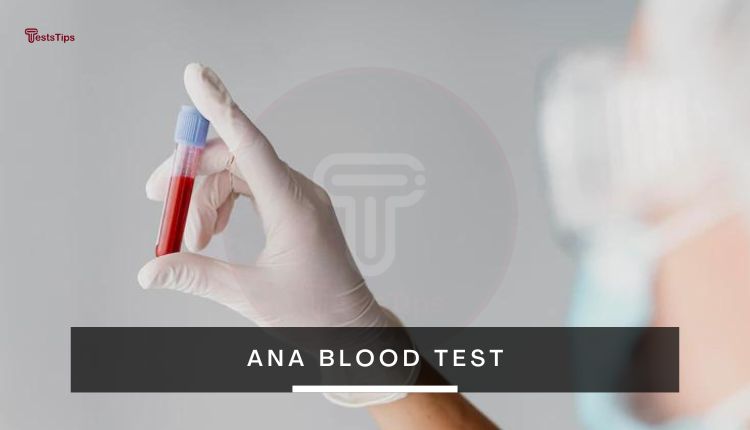ANA Blood Test: A Key Diagnostic Tool for Autoimmune Diseases
The ANA blood test is a common diagnostic tool used to detect autoimmune diseases. Learn what the test measures and what your results mean in this guide.

Table of Contents
The ANA blood test is a widely used diagnostic tool that helps detect autoimmune diseases. This test measures the presence of antinuclear antibodies in the blood, which can indicate the presence of an autoimmune disorder. In this guide, we’ll explore what the ANA blood test measures, how it’s performed, and what your results may mean.
What is an ANA Blood Test?
Antinuclear antibodies (ANAs) are antibodies in your blood that attack healthy cells within the body, specifically targeting the cell’s nucleus. ANAs are often present in individuals with autoimmune disorders, where the immune system mistakenly attacks the body’s own tissues. The ANA test is a common blood test used to detect the presence of these antibodies and diagnose autoimmune diseases.
An ANA testing is a simple blood test used to detect the presence of antibody ANA in a patient’s bloodstream. The test measures the amount and pattern of antibodies that attack the body’s healthy cells, specifically targeting the nucleus of the cell.
An ANA test is often ordered if a patient is experiencing symptoms that suggest an autoimmune disorder, such as joint pain, fatigue, and rashes. It can also be used to monitor the progress of an autoimmune disease or determine if treatment is working effectively.
Alternative names: Antinuclear antibody panel, fluorescent antinuclear antibody panel, FANA, ANA, and ANA reflexive panel.
Symptoms for which an ANA test may be requested
The symptoms that may prompt your doctor to order an ANA (Antinuclear Antibody) test include those that suggest an autoimmune disease or other conditions associated with a positive ANA screen result. These symptoms may include:
- Joint pain and stiffness
- Muscle weakness
- Fatigue
- Skin rashes or lesions
- Mouth sores
- Fever
- Hair loss
- Photosensitivity (sensitivity to sunlight)
- Raynaud’s phenomenon (fingers or toes that turn white or blue in response to cold temperatures or stress)
- Dry eyes and mouth
It is important to note that these symptoms are not specific to autoimmune diseases and may also be caused by other medical conditions. Your doctor will evaluate your symptoms and medical history to determine if an ANA test is appropriate and if additional testing or evaluation is necessary.
How is an ANA Blood Test Performed?

The ANA tests are a standard blood test, and the procedure is similar to other blood tests. A healthcare provider will clean the skin surface and insert a needle into a vein, usually in the arm, to draw a small amount of blood. The blood sample is then sent to a laboratory (Lab) for testing.
It is important to note that the serum ANA test is not a definitive diagnosis for an autoimmune disease. Instead, it is used to support the diagnosis and identify the type of autoimmune disease a patient may have. Additional tests may be necessary to confirm the diagnosis and determine the severity of the condition.
Preparation the test
If your doctor has ordered an ANA (antinuclear antibodies) test, it is essential to follow their instructions for any specific preparation requirements. In general, no special preparation is needed for an FANA test.
However, you should inform your doctor about any medications or supplements you are taking, as some drugs may affect the test results. Additionally, if you have any known allergies or adverse reactions to medical procedures, you should inform your health care provider before the test.
Interpreting the ANA Test Results
The ANA (Antinuclear Antibody) Test measures the amount of ANAs in a patient’s blood and the pattern of the antibodies. The results of the ANA test are reported as a titer and pattern.
ANA Titer refers to the amount of ANAs present in the blood. A titer of 1:40 or higher is considered positive for ANAs. However, a positive ANAs test does not necessarily mean that a patient has an autoimmune disorder. Up to 30% of healthy individuals can have a positive ANA test result.
Pattern refers to the specific way that the ANAs attack the cell’s nucleus. There are several different patterns, including homogeneous, speckled, nucleolar, and centromere. Each pattern is associated with specific autoimmune disorders, and the pattern can help doctors determine the type of autoimmune disorder a patient may have.
Positive ANA Test Results
A positive ANA (Anti nuclear Antibody) Test result may indicate the presence of an autoimmune disorder, but additional testing is required to confirm the diagnosis. Some of the autoimmune disorders associated with a positive Antinuclear antibody test result include lupus, scleroderma, rheumatoid arthritis, and sjögren’s syndrome.
It is essential to note that a positive ANA test result does not always mean that a patient has an autoimmune disorder. Other factors, such as infections, medication use, and liver disease, can cause a positive ANA test result.
Negative ANA Test Results
A negative ANA Blood Test result indicates that there are no ANAs present in a patient’s blood. However, a negative ANA test result does not rule out the possibility of an autoimmune disorder. Approximately 5-10% of individuals with autoimmune disorders have a negative ANA test result
Related tests
There are several tests that are related to the Antinuclear antibody panel, which include:
- Anti-dsDNA test
- Anti-SSA/SSB test
- Rheumatoid factor test
- Anti-cyclic citrullinated peptide (anti-CCP) test
- Erythrocyte sedimentation rate (ESR) test
- C-reactive protein (CRP) test
The ANA Blood Test is a valuable tool in diagnosing and monitoring autoimmune disorders. While a positive result can indicate the presence of an autoimmune disorder, it is not a definitive diagnosis. Additional testing and evaluation are necessary to confirm the diagnosis and determine the severity of the condition. A healthcare provider can provide additional information and guidance on the ANAs test and its implications.
